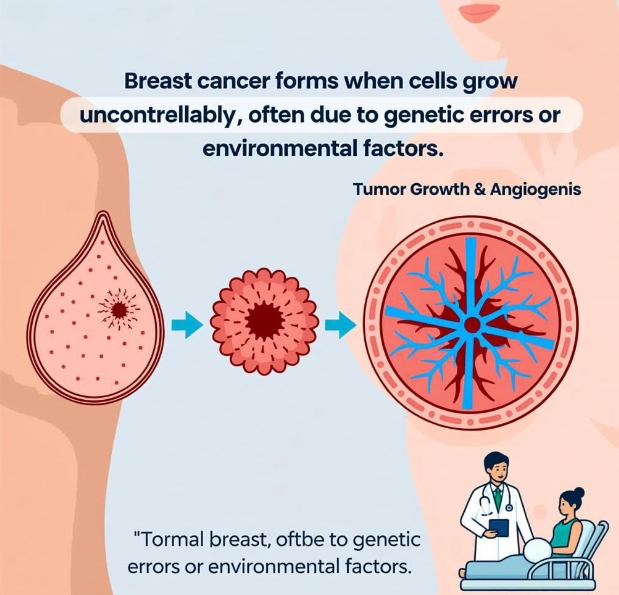Mastitis is an inflammatory condition of the breast parenchyma, most frequently infectious in the lactational period and non-infectious or duct-centric in non-lactational settings. Recognition of its characteristic features permits prompt antimicrobial therapy and prevents progression to abscess formation.
- Painful induration
A localized, wedge-shaped area of firm, tender tissue develops rapidly, often in the upper outer quadrant. Pain is throbbing and exacerbated by movement or nursing. - Erythema and oedema
Brilliant erythema with irregular borders spreads centrifugally; peau d’orange change reflects dermal lymphatic obstruction and interstitial oedema. - Pyrexia and systemic response
Temperature ≥ 38.5 °C with chills, myalgia, and tachycardia indicates bacterial infection; rigors suggest bacteraemia. - Nipple-areolar changes
Fissures, erosions, or milk stasis plugs serve as bacterial entry portals; retraction or persistent erythema may signal underlying duct ectasia in non-lactational disease. - Purulent nipple discharge
Expressible, thick, yellow-green secretion from a single duct is typical of duct-centric or sub-areolar abscess; frank pus on aspiration confirms abscess formation. - Axillary lymphadenopathy
Tender, mobile nodes < 2 cm accompany acute infection; firm, matted nodes raise concern for granulomatous or underlying neoplastic processes. - Abscess indicators
Fluctuant mass, persistent fever > 48 h despite antibiotics, or leukocytosis > 15 × 10⁹ L⁻¹ signifies pus collection requiring image-guided drainage. - Chronic or recurrent mastitis
Intermittent pain, peri-areolar fistula, and thick nipple discharge point to squamous metaplasia of lactiferous ducts (SMOLD) or granulomatous mastitis; biopsy excludes malignancy.
| Symptom / Sign | Typical Presentation |
|---|---|
| Painful induration | Wedge-shaped, tender, firm area |
| Erythema/oedema | Brilliant red, peau d’orange |
| Pyrexia | ≥ 38.5 °C, chills, tachycardia |
| Nipple changes | Fissures, retraction, milk plugs |
| Purulent discharge | Thick, yellow-green from single duct |
| Axillary nodes | Tender, mobile; firm if chronic |
| Abscess | Fluctuant mass, persistent fever |
| Chronic disease | Intermittent pain, fistula, thick discharge |

